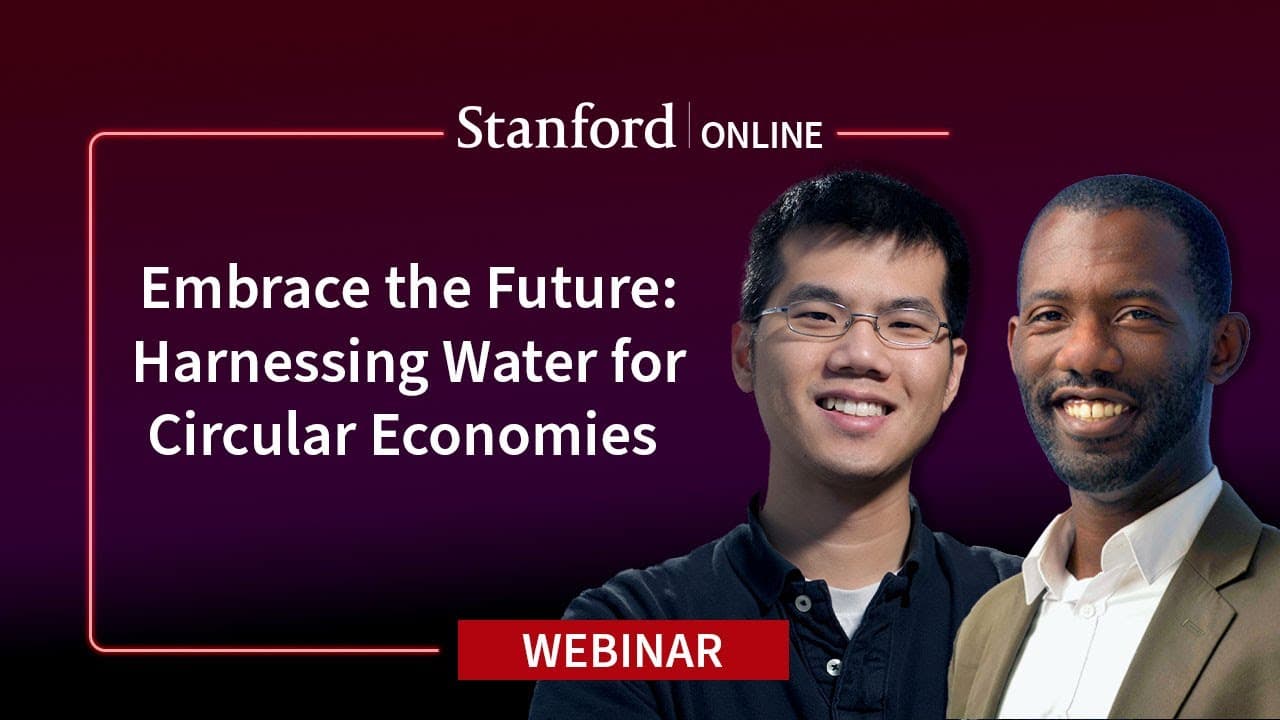Stanford Webinar - Embrace the Future: Harnessing Water for Circular Economies
25 May 2024 (over 1 year ago)

Water scarcity and climate change
- Only 1% of the water on Earth is usable by humans and other living things.
- With global warming, this limited resource will be in high demand.
- Governments, corporations, and investors will need to address their water use related to climate financial risk, net-zero targets, health issues, and natural capital assets.
Wastewater as a resource
- Wastewater can be seen as an opportunity for circular economy innovation and the creation of new businesses.
- Current innovations in wastewater treatment focus on removing pollutants and recovering valuable chemicals from wastewater.
- Various types of wastewater contain valuable chemicals such as nitrogen, phosphorus, carbon, and even metals like gold and silver.
- Recovering nitrogen from wastewater can help reduce fertilizer needs and environmental impacts associated with nitrogen discharge.
Water and energy nexus
- There are fundamental connections between water systems and energy systems.
- Water is used to produce energy through hydropower and also requires a lot of energy for treatment, resulting in greenhouse gas emissions.
- Wastewater treatment accounts for 3% of carbon emissions in the US, comparable to the aviation industry.
- Innovations are being pursued to decrease the carbon footprint of water treatment, including tracking emissions, establishing circularity, and using electrochemical methods to replace chemicals with electricity.
Wastewater treatment technologies
- Wastewater treatment plants were mainly built in the early 20th century to reduce diarrheal diseases.
- Electrochemical techniques can be used to generate acids and bases on-site for water treatment, reducing the need for chemical manufacturing and water treatment.
- Current methods for separating lithium and cobalt from batteries include mechanical, hydrometallurgical, and pyrometallurgical processes.
- Hydrometallurgical processing involves dissolving the battery materials in water, and new methods using membranes and absorbents are being developed to improve efficiency and reduce energy inputs.
Circularity in the water sector
- Circularity examples include using reverse osmosis to turn wastewater into drinkable water, recycling materials in mining operations, and achieving a high recycling rate for lead-acid batteries.
- Water plays a crucial role in chemical manufacturing, particularly in fertilizer production, where it's used to dissolve and transport fertilizers.
- Circularity opportunities exist throughout the supply chain, from mining and battery production to battery recycling.
Business opportunities in water treatment and resource recovery
- The webinar highlights the importance of water in the circular economy and explores business opportunities in water treatment and resource recovery.